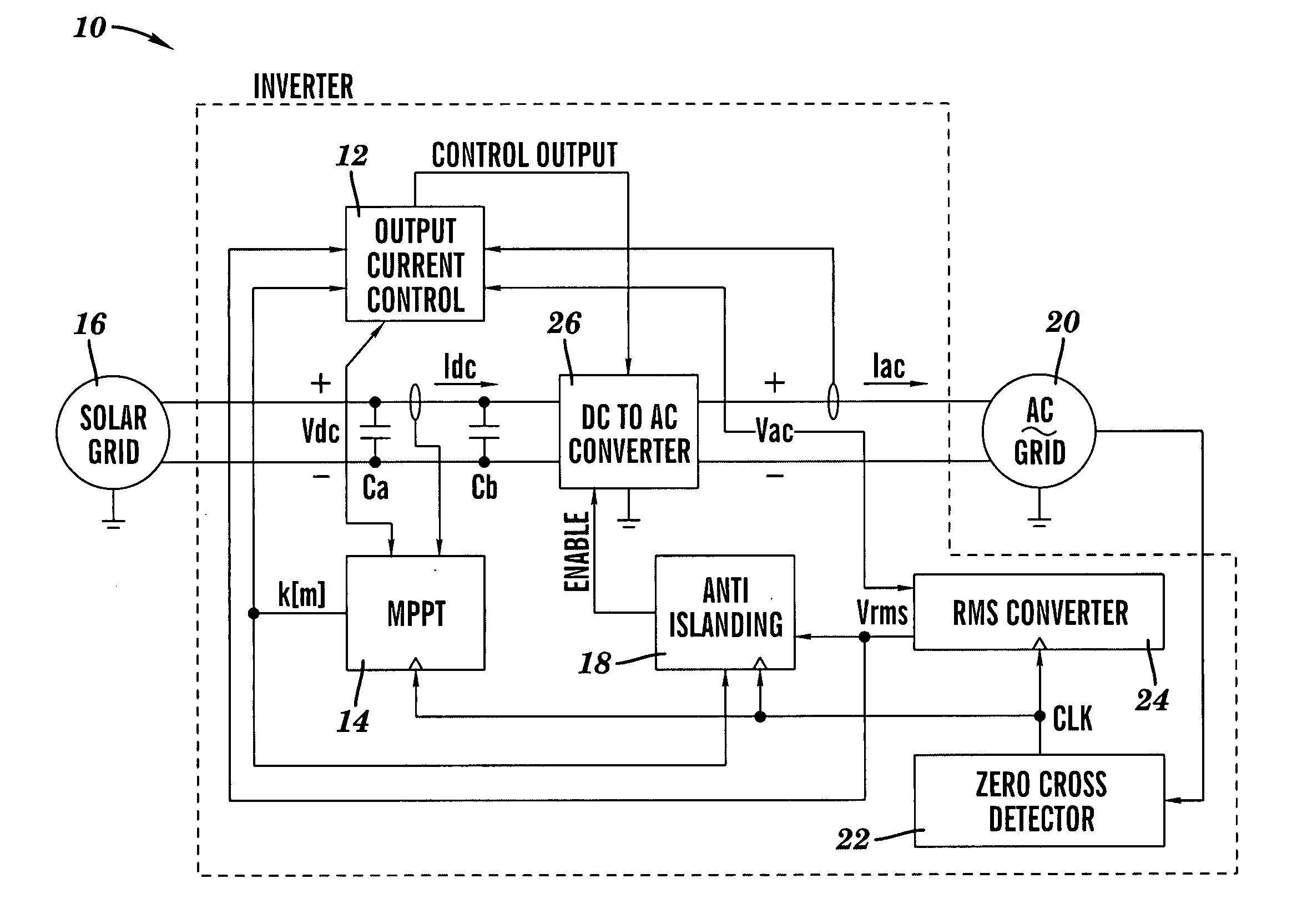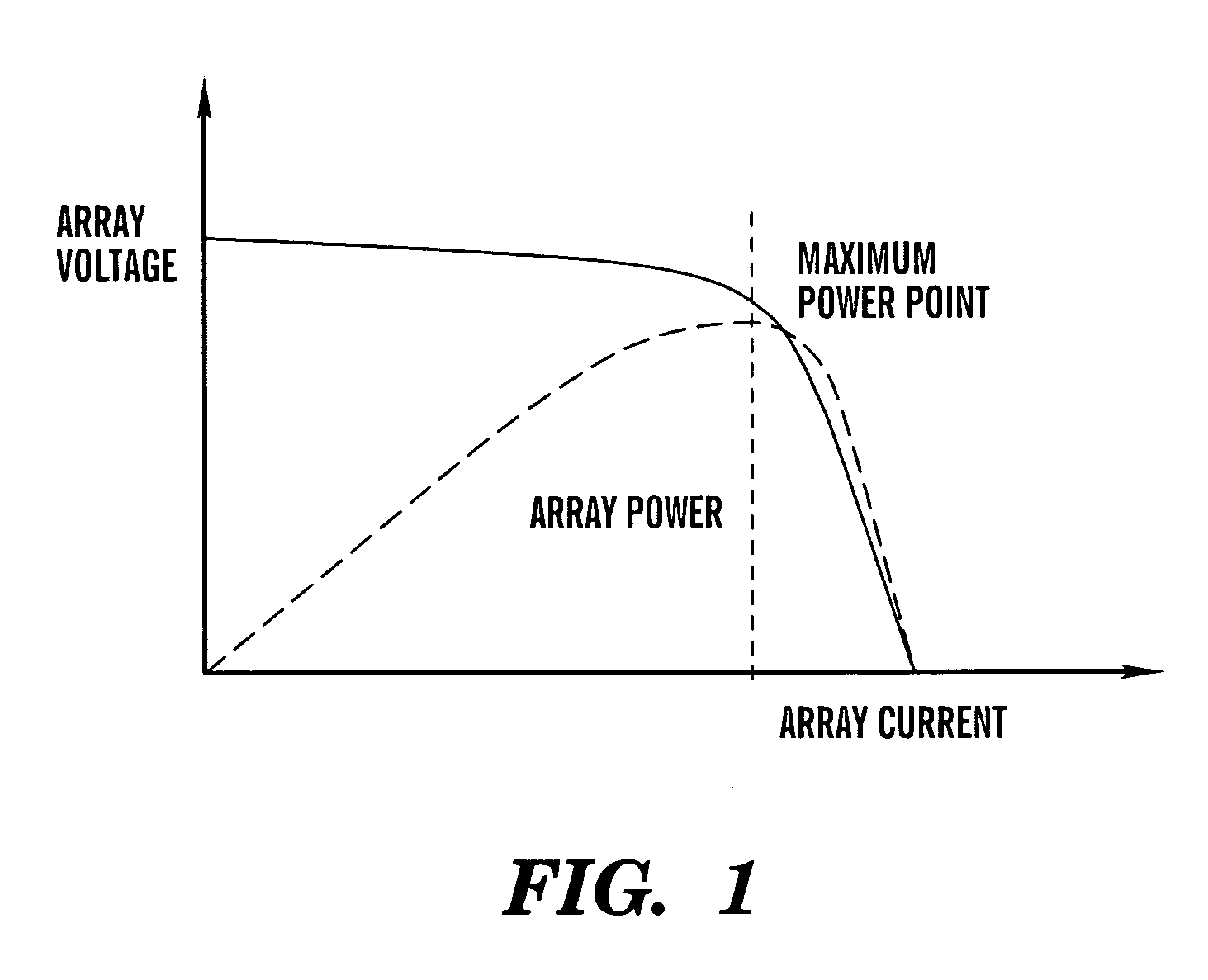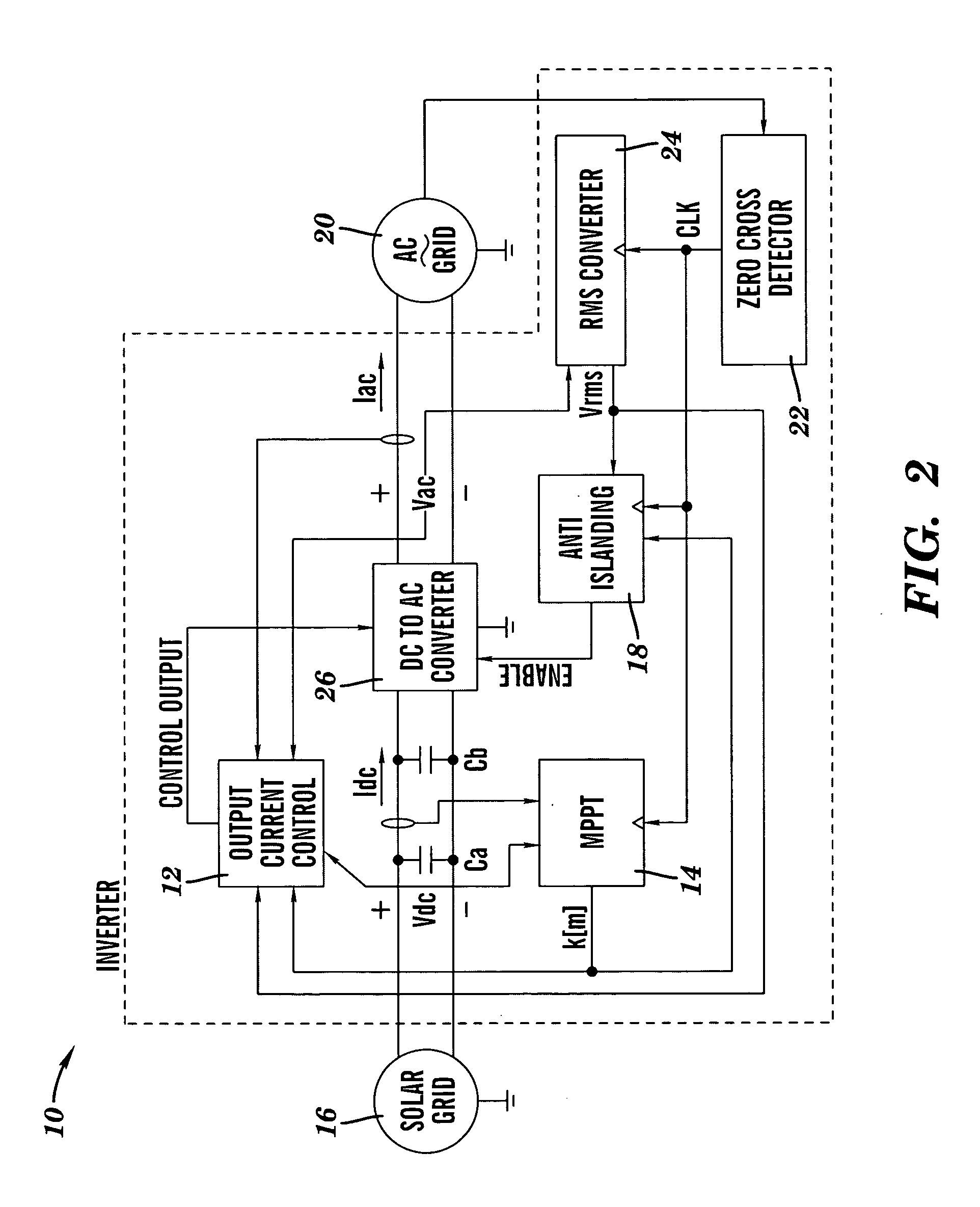Inverter control methodology for distributed generation sources connected to a utility grid
- Summary
- Abstract
- Description
- Claims
- Application Information
AI Technical Summary
Benefits of technology
Problems solved by technology
Method used
Image
Examples
Embodiment Construction
[0041] A control system for an inverter 10 in accordance with the present invention is illustrated in FIG. 2. As shown, the inverter control system has three main components: an output current control 12, a maximum power point tracking (MPPT) system 14 for determining the peak power operating point of a solar grid 16, and an anti-islanding controller 18. These control elements contain both individual enhancements and collective enhancements over the prior art.
[0042] In FIG. 2, the solar grid 16 (also known as a solar PV array) comprises a combination of solar-photovoltaic cells from which the inverter 10 draws power. The AC-grid 20 represents the utility into which power is sourced by the inverter 10. A zero cross detector 22 provides a clock signal CLK used to synchronize execution of an RMS voltage calculation by an RMS converter 24, anti-islanding detection by the anti-islanding controller 18, and execution of an MPPT algorithm by the MPPT system 14. A direct current (DC) to alt...
PUM
 Login to View More
Login to View More Abstract
Description
Claims
Application Information
 Login to View More
Login to View More - R&D
- Intellectual Property
- Life Sciences
- Materials
- Tech Scout
- Unparalleled Data Quality
- Higher Quality Content
- 60% Fewer Hallucinations
Browse by: Latest US Patents, China's latest patents, Technical Efficacy Thesaurus, Application Domain, Technology Topic, Popular Technical Reports.
© 2025 PatSnap. All rights reserved.Legal|Privacy policy|Modern Slavery Act Transparency Statement|Sitemap|About US| Contact US: help@patsnap.com



